Iceland’s Eastern Region is one of the most remote and least visited areas of the entire country. Filled with natural wonders, narrow fjords, and tiny fishing villages, East Iceland is an unspoiled treasure that deserves more visitors than it currently gets. Here is a quick guide to all of the best things to do in East Iceland!
Disclosure: Some of the links below are affiliate links. When you purchase through links on my site, I may make a small commission (at no extra cost to you!).
About East Iceland
East Iceland (also known as Austurland) is characterized by its patchwork of lava caves, black sand beaches, waterfalls, traditional fishing villages, and jagged coastline. Herds of wild reindeer and flocks of chatty puffins are a common sight, depending on when you visit. You can also spot Iceland’s largest forest and a blue lagoon that’s rumored to be the home of the Loch Ness monster’s close cousin!
With a permanent population of just over 13,000 people, the East Coast of Iceland is the perfect place to escape into nature and get off the beaten path. Reykjavik, the Golden Circle, and South Iceland can seem like super crowded places in comparison!
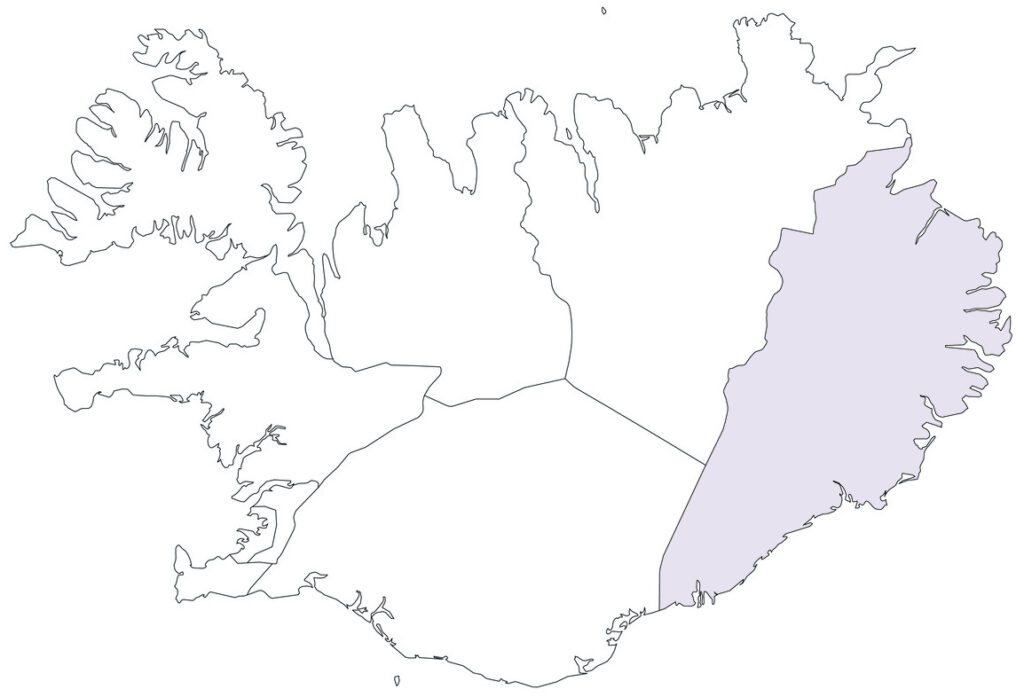
How to get to East Iceland
By plane
You can reach East Iceland’s largest town, Egilsstaðir, by plane. Icelandair operates daily flights between Reykjavik’s Keflavik International Airport (KEF) and Egilsstaðir Airport (EGS).
Like most other things in Iceland, the journey won’t be cheap — roundtrip tickets for the 1-hour flight can cost upwards of $600 USD! If you’re short on time, though, flying could be a good option.
By car
Getting to the east of Iceland by car is the more popular option for international visitors because it can be added as a stop on a longer Iceland road trip!
Most of the natural attractions in eastern Iceland are along the Ring Road, the main road that circles the country. I’d highly recommend renting a car (or a campervan) and road tripping the country — it’s the easiest way to see what you want and it gives you the ultimate sense of freedom!
Driving times to Egilsstaðir from:
- Reykjavik: 7 hours 50 minutes
- Vik: 6 hours 30 minutes
- Akureyri: 3 hours 15 minutes
⇉ Everything you need to know about driving in Iceland: A road trip guide
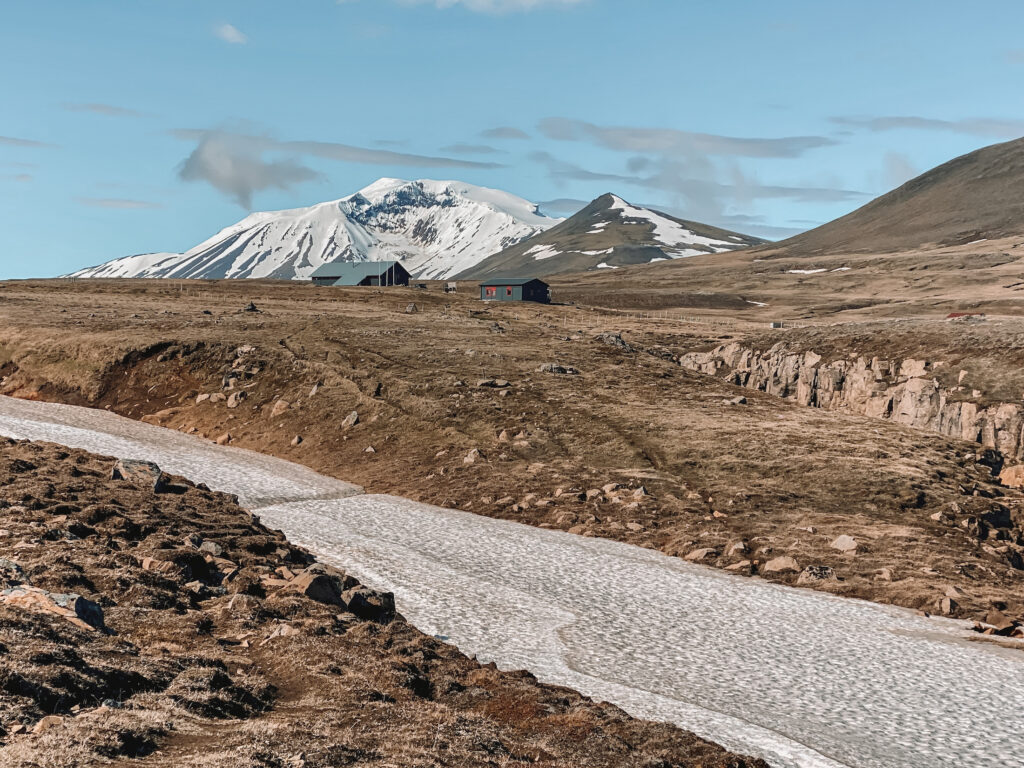
Things to do in East Iceland
Vestrahorn
Vestrahorn is a dramatic and remote mountain on the Stokksnes Peninsula near Iceland’s south coast. Located near the small fishing town of Höfn, the road leading toward Vestrahorn is popular with photographers and people wanting to take in the beautiful landscape.
The road is privately owned, so there is a small entrance fee of 900 ISK (about $6.50 USD) to drive it. Once there, you can also stop by an abandoned village built as a filming location (called Viking Village Prop For Movie on Google Maps).
Laekjavik
Lækjavik is a nature reserve along Iceland’s southeastern coast. You’ll find steep cliffs, jagged fjords, and rugged beaches, as well as funky rock formations jutting out from the sea. The relaxing nature reserve is one of the best stops to make along the scenic drive up the coast — stretch your legs, dip your toes in the water, or have a picnic lunch with a view.
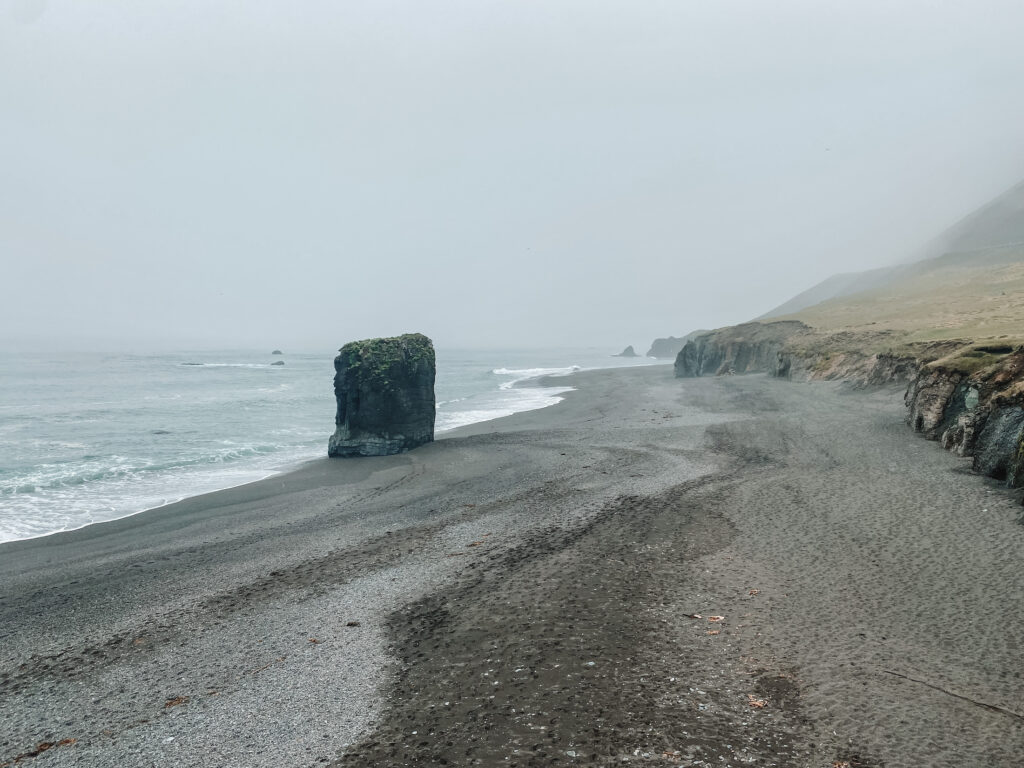
Petra’s Stone Collection
One of the more offbeat and quirky attractions in the surrounding area, Petra’s Stone Collection is a popular destination for visitors to East Iceland.
The attraction is exactly what it sounds like — a collection of rocks and stones that has been carefully curated by Petra, a local woman, over the years. The stones come in all sorts of shapes, sizes, and colors and come from various areas around Iceland. You can learn all about their history and geological feature in the rock garden.
Petra’s Stone Collection has an entrance fee of 1,500 ISK ($10.54 USD).
Folaldafoss
Folaldafoss is a powerful and beautiful waterfall located just off the Ring Road on Route 939. It is one of the most stunning waterfalls in the country and has a drop of around 30 m (100 ft) over its two tiers. The cascade is framed by steep cliffs on either side that give it an impressive natural beauty, especially when the area is shrouded in fog.
From the parking lot, it’s a short walk through a grassy meadow to reach the base of the waterfall. The road to reach Folaldafoss is a bumpy gravel road best suited for 4WD vehicles.
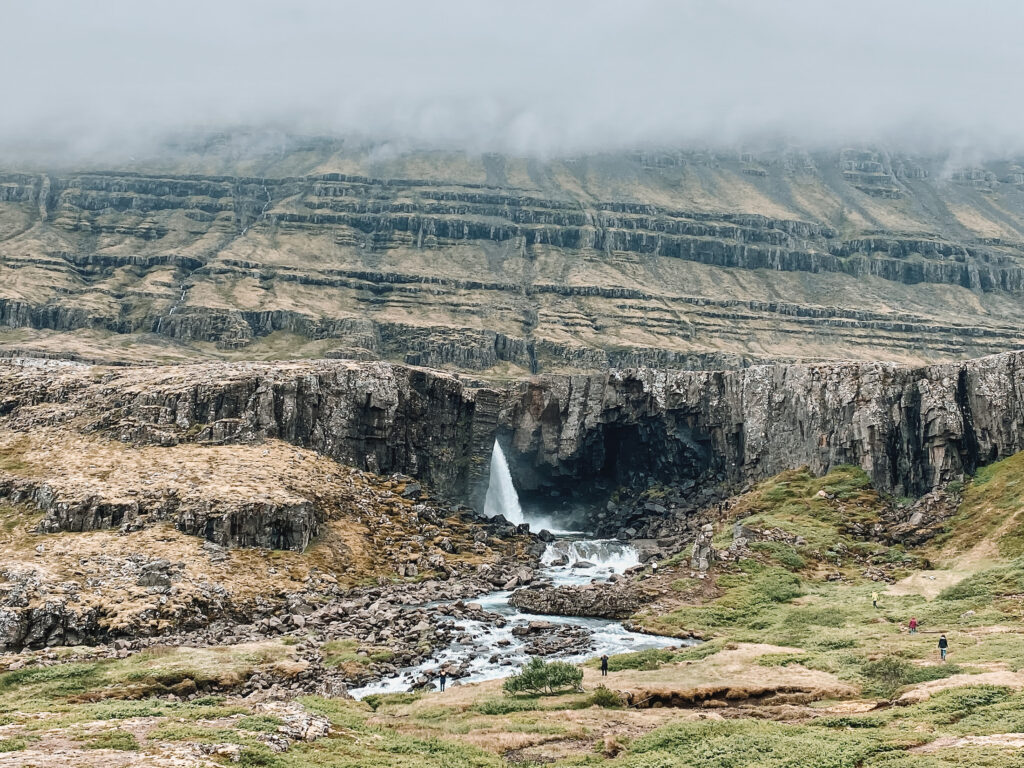
Seyðisfjörður
Seyðisfjörður is a small fishing village in East Iceland with a population of around 700 people. Located on the country’s easternmost fjord, it is surrounded by spectacular mountains and overlooks an idyllic bay.
The town is known for its unique architecture, as many of the old wooden buildings have been carefully restored to their original condition. Seyðisfjörður has become popular among tourists who come to enjoy its natural beauty and vibrant town centre. Look out for Seyðisfjarðarkirkja, the baby blue church, and Rainbow Walk, the colorful trail leading to it.
There are plenty of outdoor activities around the town, including kayaking, cycling, and taking a boat ride through the fjord’s stunning landscape. Seyðisfjörður also offers some great dining options, including locally-caught seafood from restaurants such as Nordic Restaurant.
Borgarfjörður Eystri
Borgarfjörður Eystri is another tiny village in the depths of Iceland’s Eastfjords. The village has a population of only about 200 people, making it one of Iceland’s smallest communities.
The area around Borgarfjordur Eystri is known for its remarkable natural beauty and abundance of wildlife. The nearby mountain range offers beautiful views and a few backcountry hiking trails, while whales can often be spotted off the coast during the summer months. Birdwatchers will find plenty to see here as well — puffins, arctic terns, kittiwakes, and guillemots flock by the thousands.
Make sure to stroll over the flag bridge to check out Lindarbakki, a quaint turf house built partially into the ground.
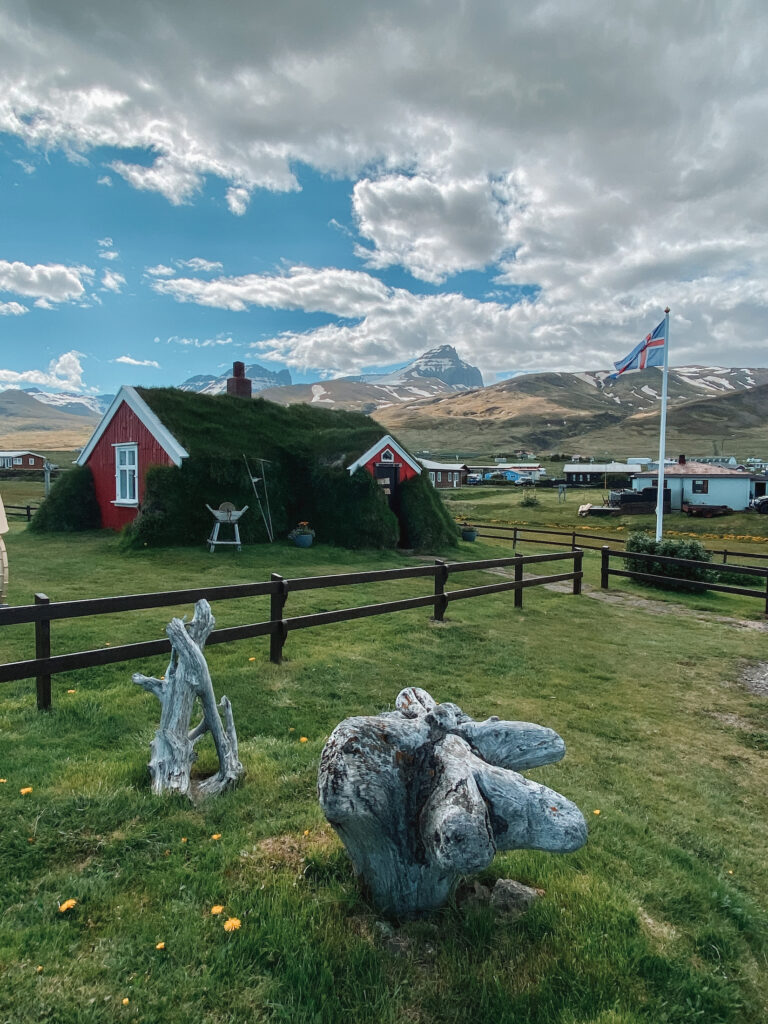
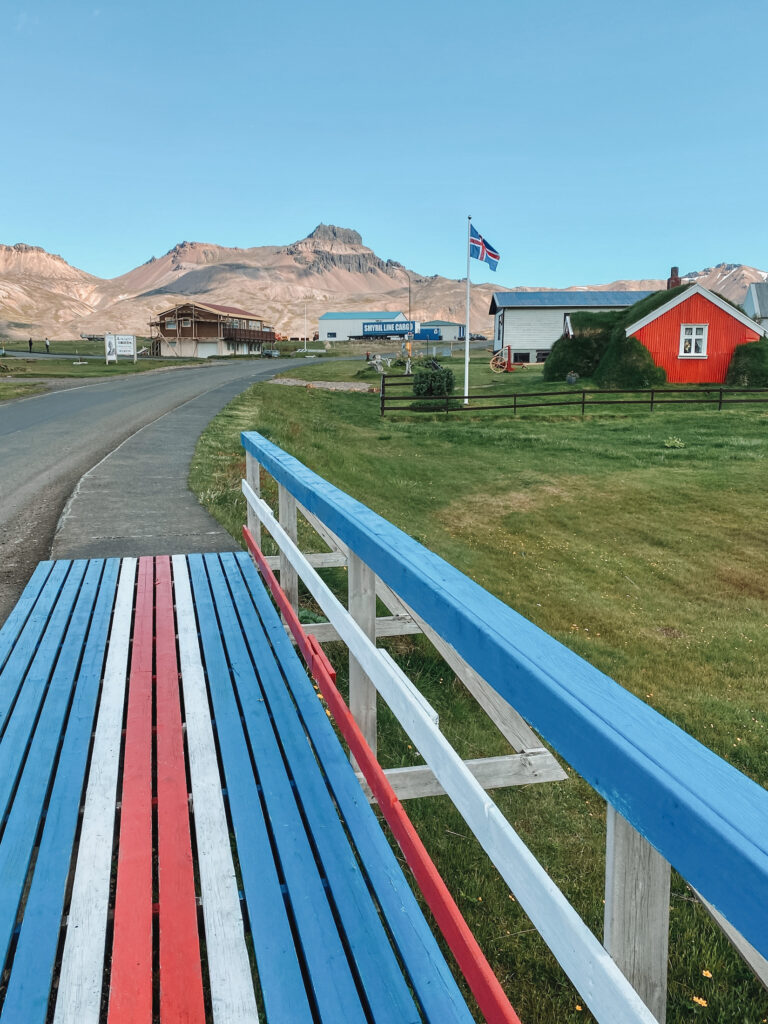
See puffins at Borgarfjarðarhöfn
Borgarfjarðarhöfn is hands-down one of the best places to see puffins up close and personal.
Located just past the small town of Borgarfjörður Eystri, Borgarfjarðarhöfn offers a safe and convenient place to watch nesting puffins in their natural habitat. Wooden platforms and a shelter with viewing windows give you unobstructed views of the puffins as pop in and out of their holes.
Visitors can take boat tours out into the bay or explore the surrounding coastline by foot. With some of the best views of the East Fjords Iceland, Borgarfjarðarhöfn has become a popular tourist destination for nature lovers looking to experience some of Iceland’s incredible wildlife up close.
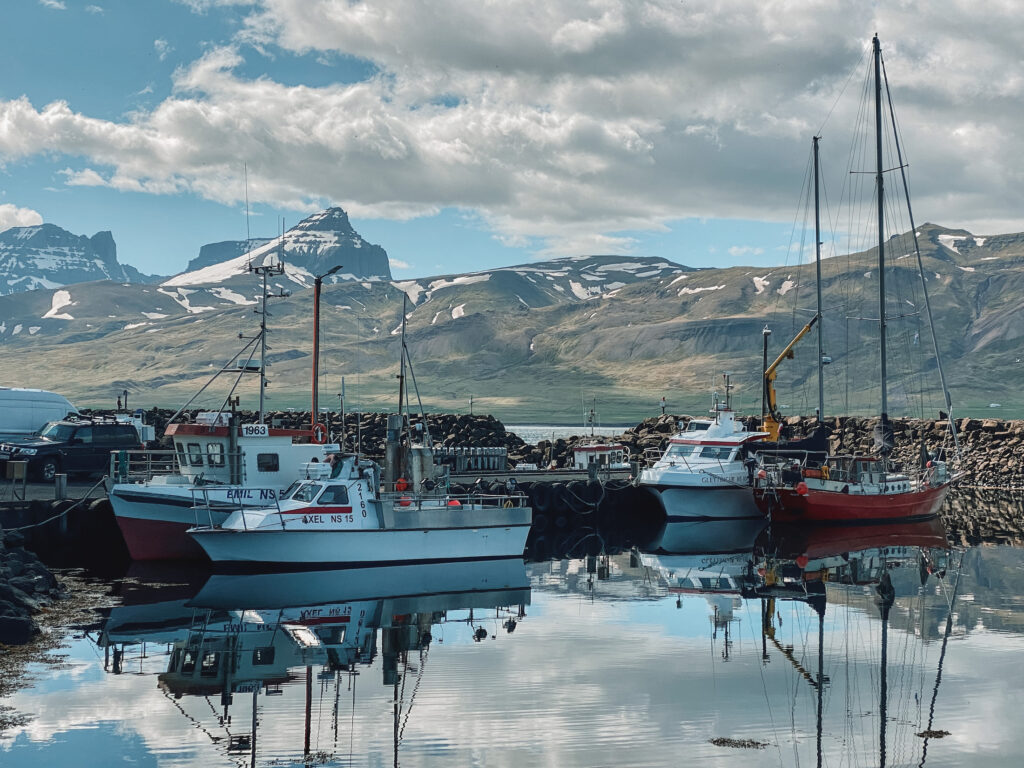
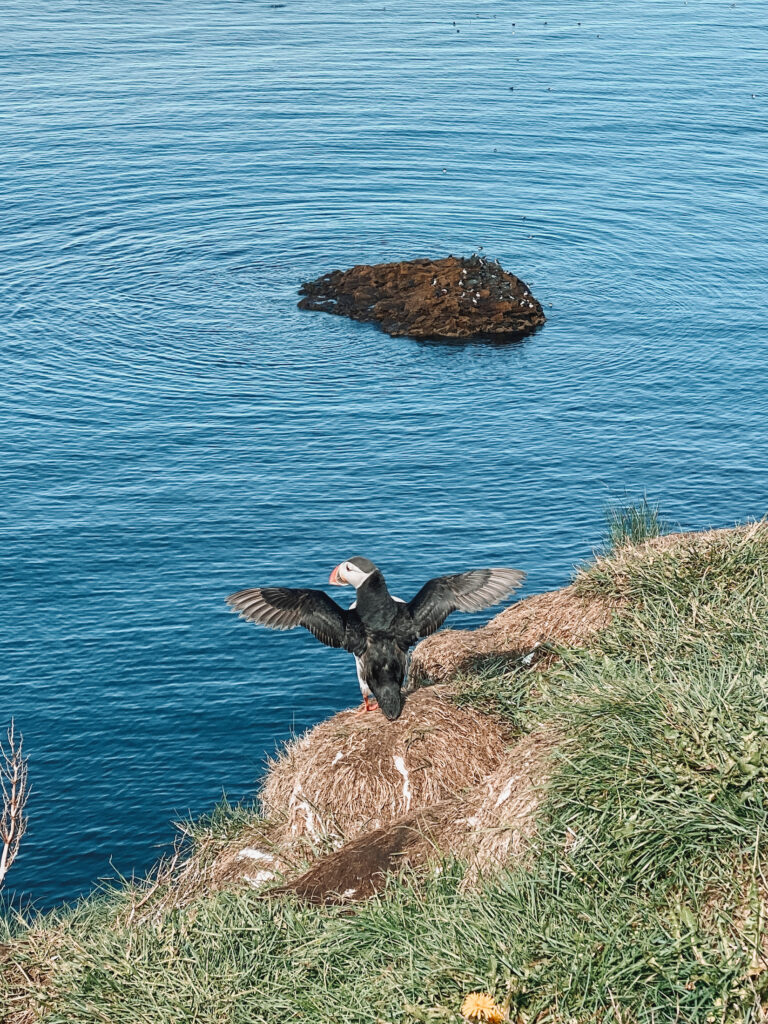
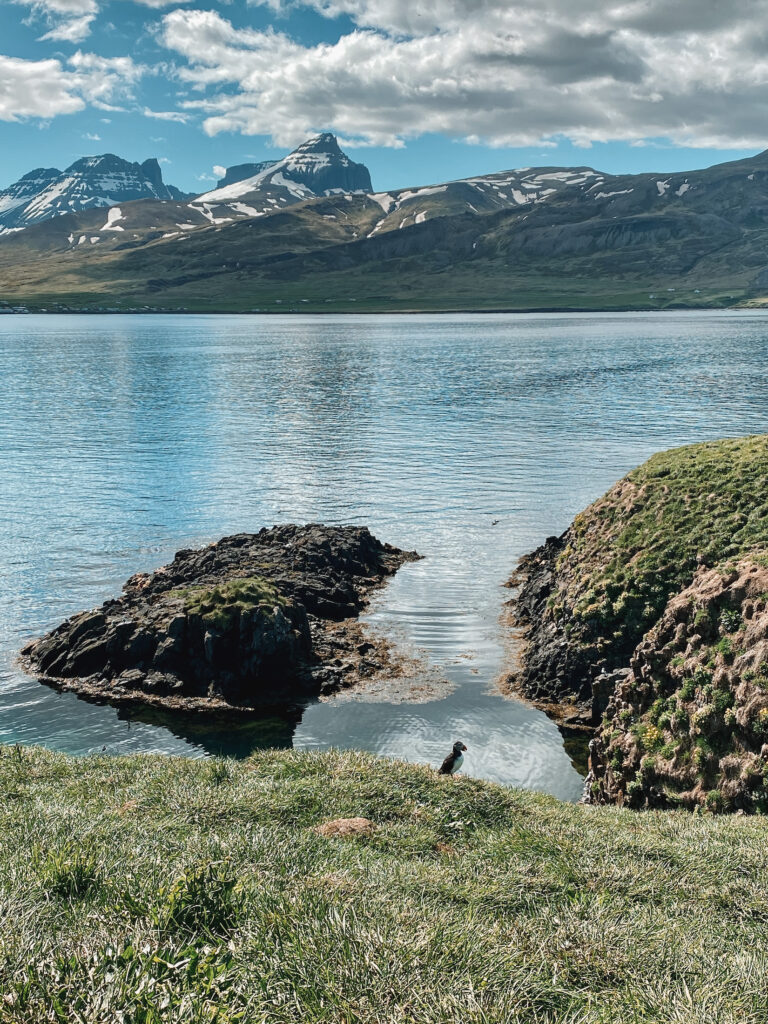
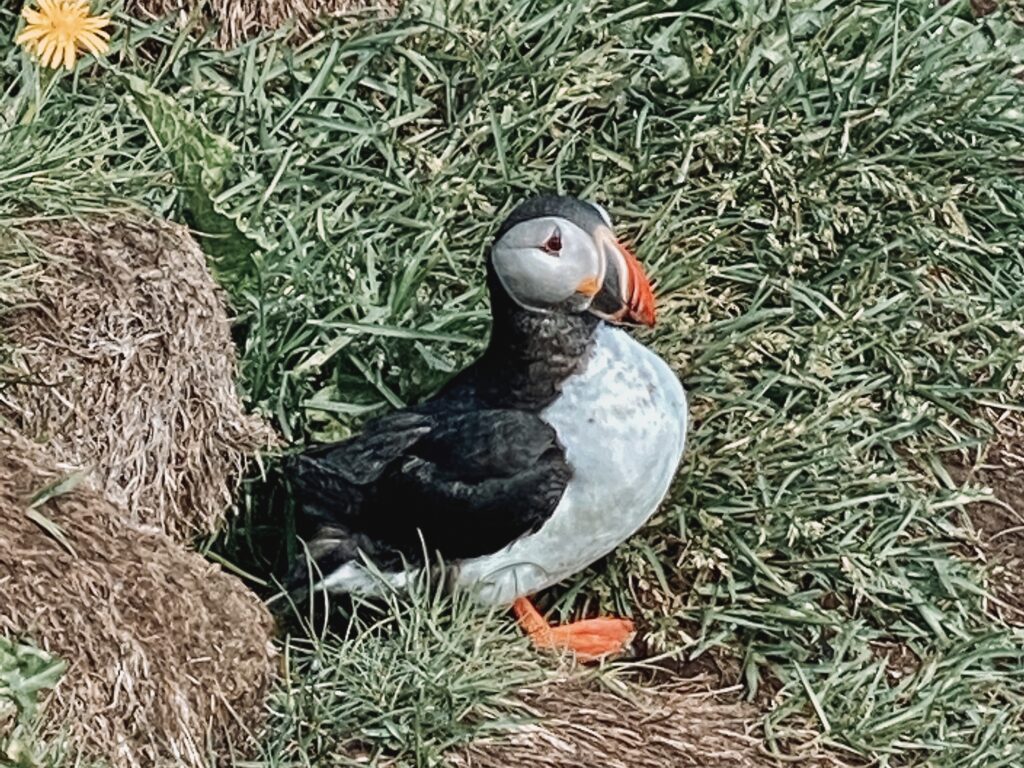
Vök Baths
The Vök Baths are a set of four geothermal hot pools that float over Lake Urriðavatn. The pools range in temperature between 37-41°C (98.6-106°F). If you overheat, a quick dip in the lake or a trip through the cold mist tunnel will cool you off instantly.
In addition to the relaxing geothermal pools, the Vök Baths also offer a steam room and a swim-up pool bar. The hot springs are a great place to spend a chilly East Iceland afternoon!
Tickets start at 5,990 ISK ($42 USD) and can be bought online from the Vök Baths website in advance.
Lagarfljót
Lagarfljót is a long, narrow lake located in East Iceland. It is one of the country’s most famous bodies of water, and has been the subject of many myths and stories throughout its history. Legend has it that Lagarfljót Wyrm, a serpentine cousin of the Loch Ness monster, has been living in the water for hundreds of years!
The lake’s maximum depth reaches over 110 m (360 ft), making it one of Iceland’s deepest lakes. Lagarfljót is home to numerous species of fish including brown trout, Arctic char, and Atlantic salmon. In addition to its natural beauty and abundant wildlife, the area around Lagarfljót also offers plenty in the way of outdoor activities — Hallormsstaður Forest and Hengifoss waterfall are both just a short drive away.
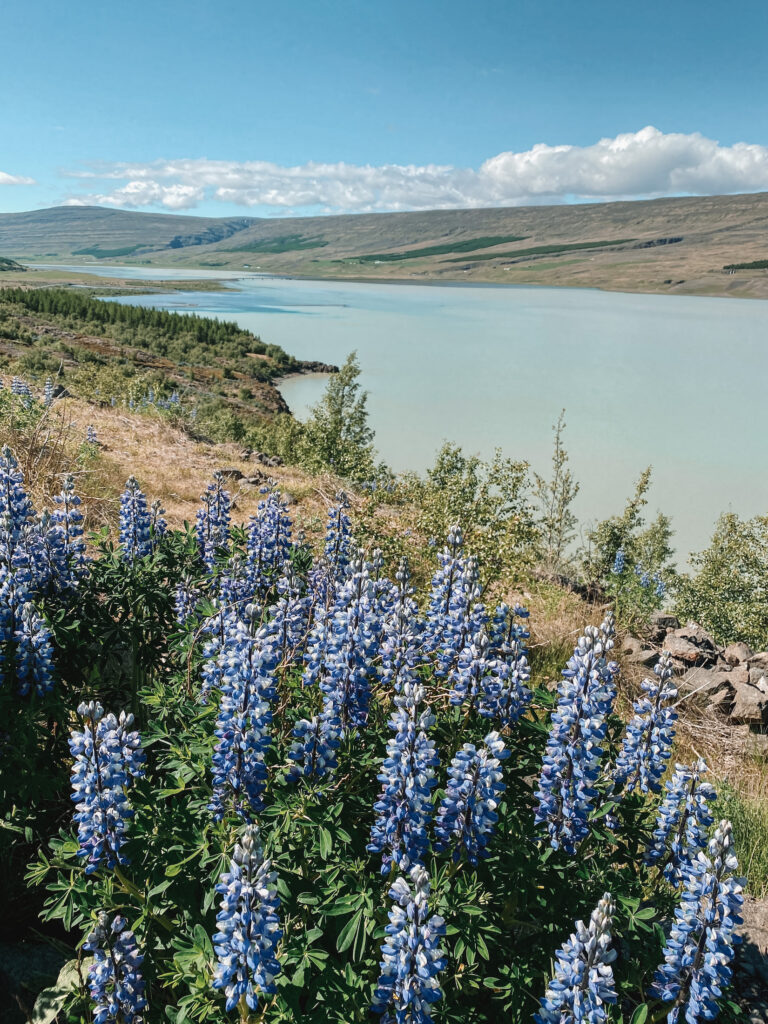
Hallormsstaður Forest
Hallormsstaður Forest is the largest forest in Iceland, covering an area of around 740 hectares (7.4 sq km / 2.8 sq mi). It is filled with a wide variety of flora and fauna, including over 80 tree species.
The forest offers many recreational activities, such as hiking through its diverse landscapes. There are also two campsites within the woods for those wanting to stay and enjoy the area a bit longer.
Hengifoss
Hengifoss Waterfall is one of the most impressive natural wonders in East Iceland. It stands at a towering 128 meters (420 ft) high, making it one of Iceland’s tallest waterfalls!
From the car park, it’s a 1-hour hike on a well-marked trail to reach the falls. There is also a food truck directly opposite the parking area to help you fuel up before your walk.
The view from the base of the falls is incredible, with layers of striated basalt columns that form a unique backdrop to the cascading water. It’s also possible to get down close to the falls if you’re careful — just remember to take extra care when navigating around slippery rocks!
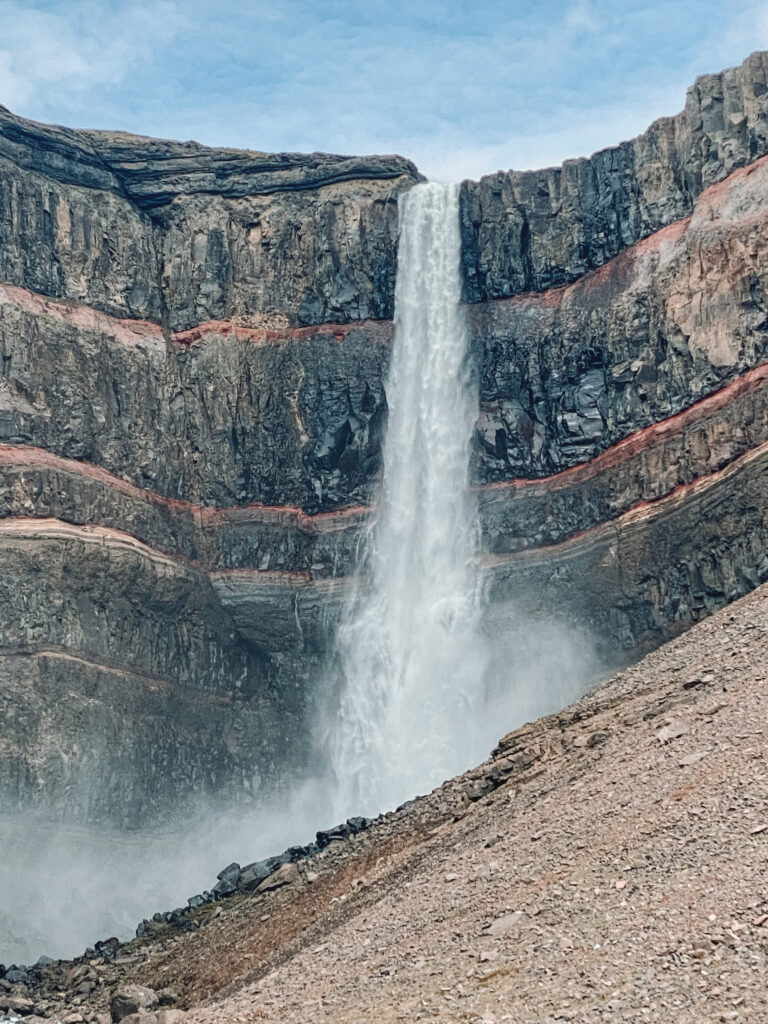
Laugarfell & Waterfall Circle hike
Hiking Waterfall Circle is definitely one of the best things to do in Eastern Iceland!
The Waterfall Circle is an 8 km (5 mi) hiking trail that starts and ends at Laugarfell, a mountain hut hotel in the Eastern highlands. The hike is absolutely unreal and relatively unknown — somehow, I didn’t come across a single other person!
Along the way, the trail passes five waterfalls and one stunning canyon. The landscapes are otherworldly and the views don’t stop the entire way. Once you’ve finished your hike, you can even soak in Laugarfell’s natural hot springs (the entrance fee costs 1,500 ISK/$10.50 USD).
To get there, you’ll need to drive 74 km (46 mi) southwest from Egilsstaðir. All but the last 2 km (1.2 mi) of the road are paved, but it shouldn’t be a problem for most cars in the summer months.
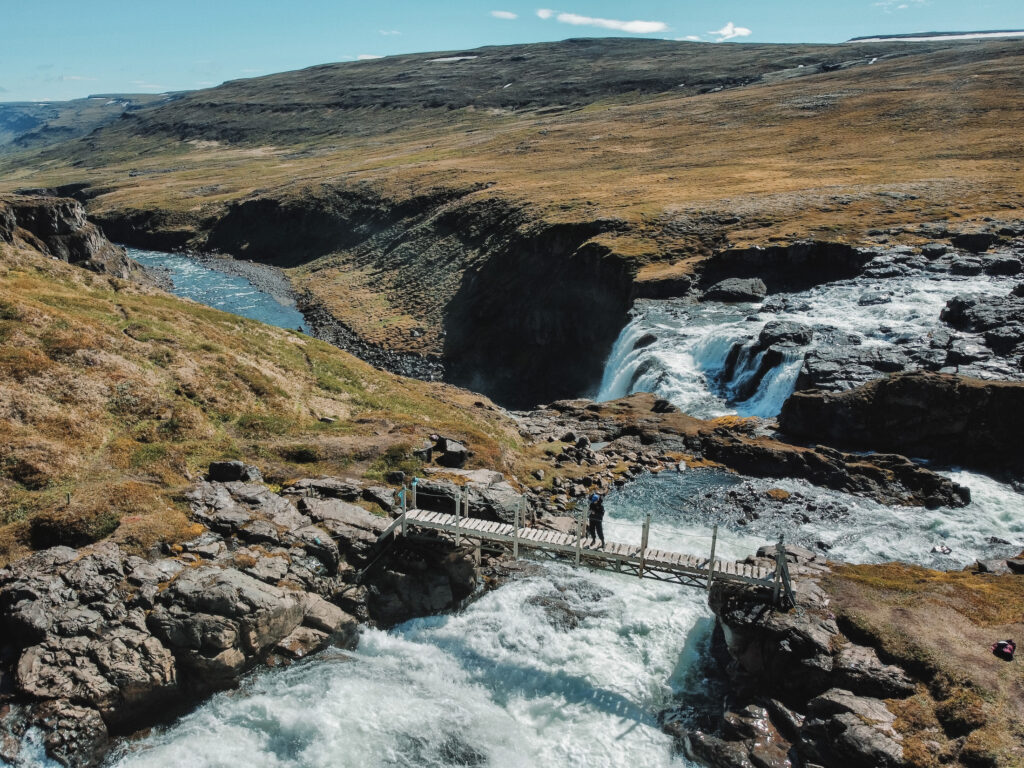
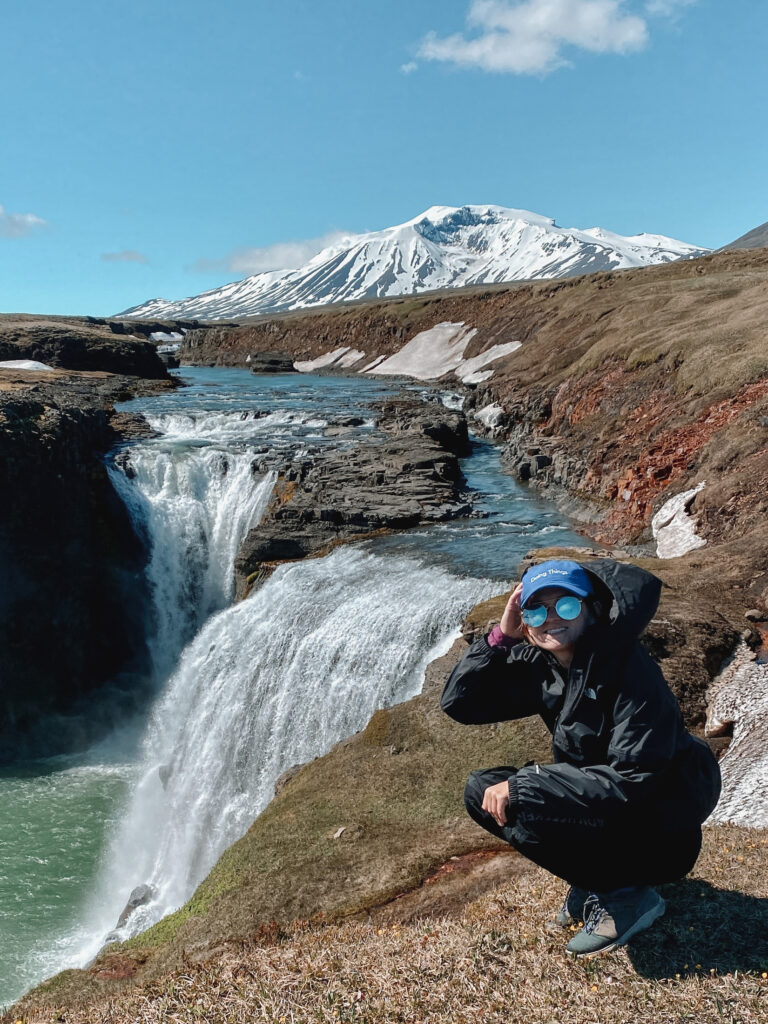
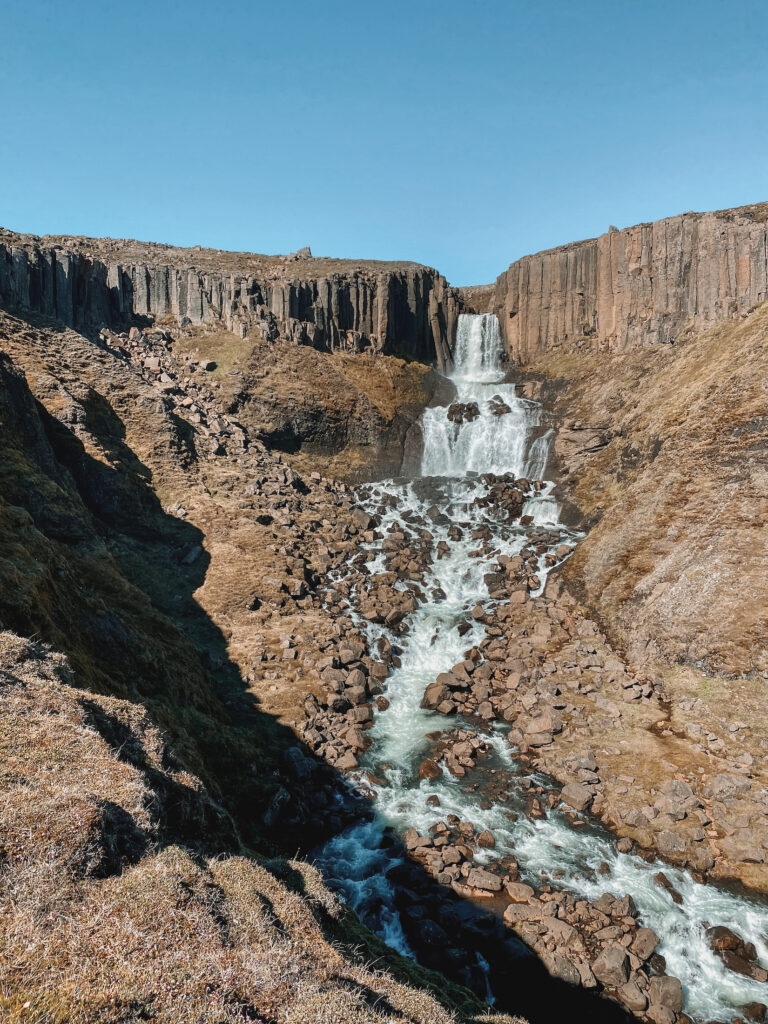
Stuðlagil Canyon
Stuðlagil Canyon in East Iceland is a breathtaking natural phenomenon that’s been thousands of years in the making! Formed by volcanic activity, its incredibly steep walls of basalt rock can reach up to 100 meters (328 ft) high. The canyon spans over 2 km (1.2 mi) along the Jökulsá á Fjöllum river and is also home to some of the country’s most stunning waterfalls.
Visiting Stuðlagil Canyon can make for an unforgettable experience, especially if you go down towards the water! There are several paths leading down into the canyon, so be sure to wear sturdy shoes with good grip as they can get slippery. In the spring, you’ll also need to be aware of nesting pink-footed geese.
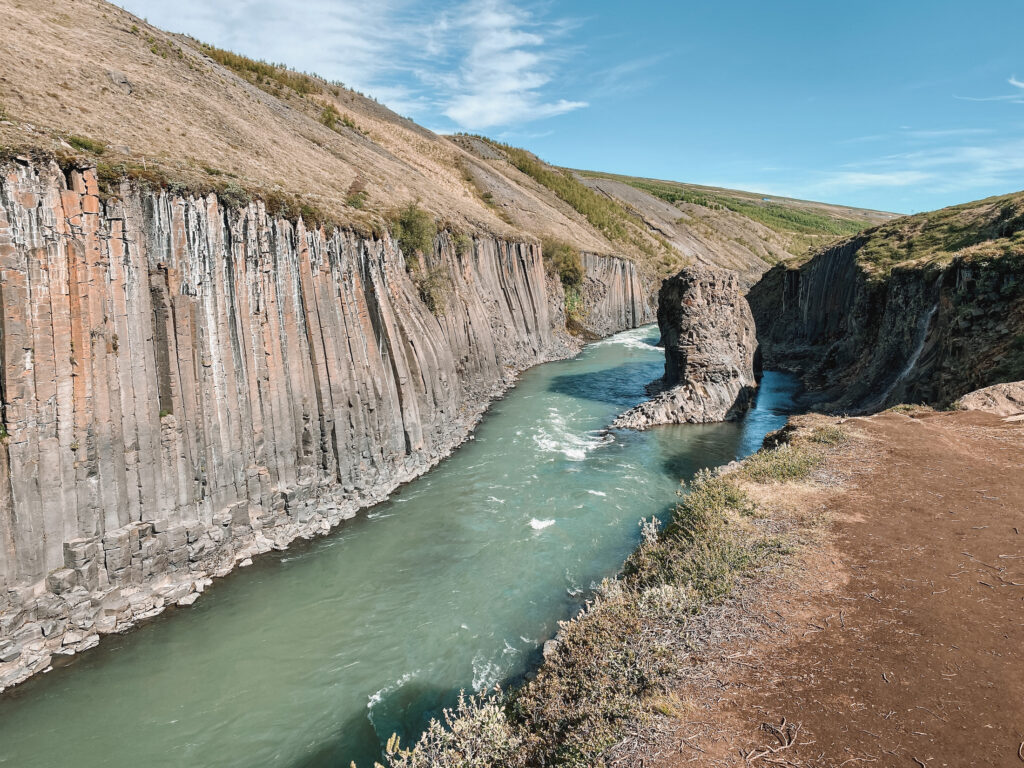
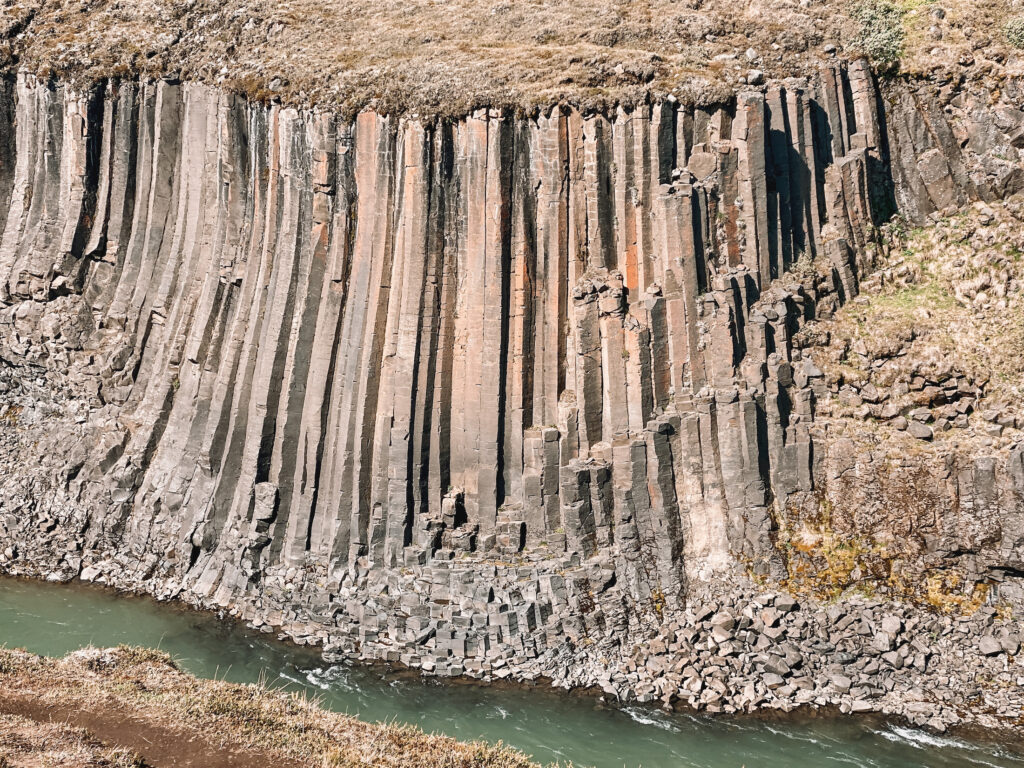
East Iceland FAQ
How long should I spend in East Iceland?
The answer to this question depends on your interests and the amount of time you have available. If you’re looking for a short break, anywhere from 3-5 days should be enough to explore some of East Iceland’s key attractions such as Jökulsárlón Glacier Lagoon, Vatnajökull National Park, and Stuðlagil Canyon. For those with more time available, I’d recommend spending at least one week in East Iceland so that you can really get off the beaten path and experience all that the region has to offer.
Is East Iceland worth visiting?
Yes, East Iceland is definitely worth visiting. The region has some of the most stunning scenery in all of Iceland, from the majestic glaciers and serene fjords to rugged mountains and pristine waterfalls. You’ll also find plenty of East Iceland attractions and outdoor activities like hiking, fishing, kayaking, and bird watching. Plus, there are numerous charming villages full of culture and history to explore as well!
What months can you see puffins in Iceland?
You can see puffins in Iceland in the summer months (May through early September). This is when over 8 million of the birds return to their yearly breeding grounds — that’s nearly 60% of the world’s entire Atlantic puffin population!
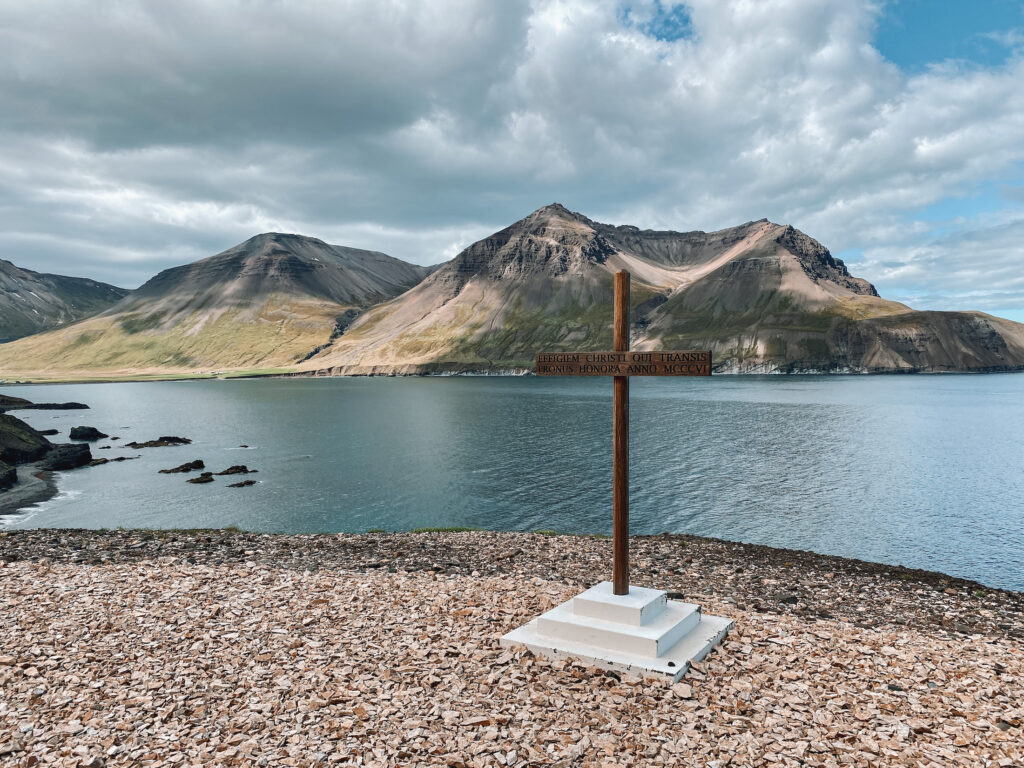
You’ll also love:
- One Day in Paris: The Essential 24-Hour Itinerary
- Full Guide to Hiking Huayna Picchu: Machu Picchu’s Best Viewpoint
- I Quit My Dream Job as a Flight Attendant — Here’s Why
Thanks for reading this East Iceland travel itinerary!
xoxo Niki
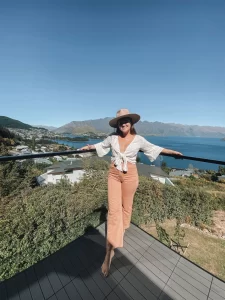
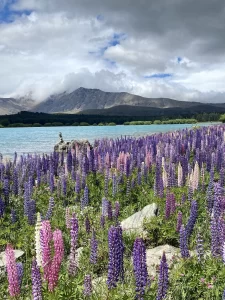
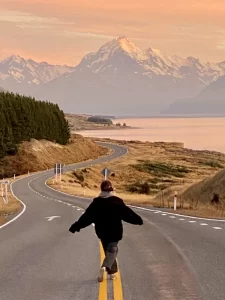
Thanks for the informative and well-organized post!